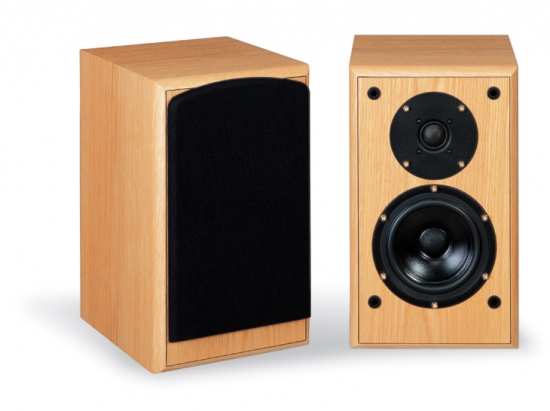Ruark Sabre III Bookshelf speakers
The monitor speakers Ruark Sabre III belong to a renewed recently Heritage series, which incorporates all the most successful developments in recent decades. I need to say that exactly Ruark laid the foundation of that approach to stereo, which is known today as English sound. For many years the company has produced acoustics which is different from competitors' products: firstly by its own view on what aspects of design should be considered as primary for the achievement of high level of sound.
Like all speaker systems of this brand Ruark Sabre III doesn't aspire to impress a buyer by extravagant outlook, the emphasis is placed on following the traditions and chastity of style, showing in time-tested solutions and materials. The quality of the panels' finish by wood veneer is excellent - it's no coincidence that each speaker system has a silver badge of the League of English wrights (the acoustics, assembled manually in Western Europe, becomes more and more expensive through the years).
Like in floor speaker systems of Heritage series, the back wall of Ruark Sabre III is made of dense composite material which provides an additional rigidity to the cabinet. There are a neat bass reflex port and also two pairs of terminals, for which a special oval hollow is provided.
Dynamic heads, used in this model, corresponds to the traditions. The main speaker, which sounds MF/LF range, has the diameter of only 150 mm and is equipped with a paper cone with a special impregnation. The tweeter doesn't also stand out - this is a good and very qualitative head with silk dome with special Sonolex impregnation.
From the first songs it becomes obvious that Ruark Sabre III are the typical representatives of English monitors, which provide clear and smooth sound over entire frequency range except the lowest bass, inevitably limited in depth.
Actually the quality of speaker system's work largely depends on how correctly it presents that part of bass specter, which is available for it due to physical reasons. There are speaker systems, putting their best foot forward to be like full-range acoustics - by creating high pressure in upper bass- and very often this leads to the fact that bass turns out to be amorphous and boomy.
Ruark Sabre III are different - they don't trench on bass depths, which are too tough for them, but try to focus on correct transfer of the rest part of the range. And, I must say, they succeed brilliantly in this.
Ruark Sabre III absolutely correctly put all musicians in their places on classical orchestral compositions and the stage itself is perfectly read in any direction. The timbre of acoustic instruments is played brilliantly; some kind of tension rarely appears in sound, but only when several instrument groups enter simultaneously.
Both male and female vocal is given very truly by Ruark Sabre III; a good illusion of presence of soloists in a room is created. However, lower middle needs a bit more weight and that's why an emotional intensity is slightly reduced.
But acoustic instruments in compositions of Blackmore's Night sparkle with all its edges.
The acoustics plays very smoothly and clearly, successfully coping with very different genres. It is nice to note the absence of distortion at high volume in bass area.



